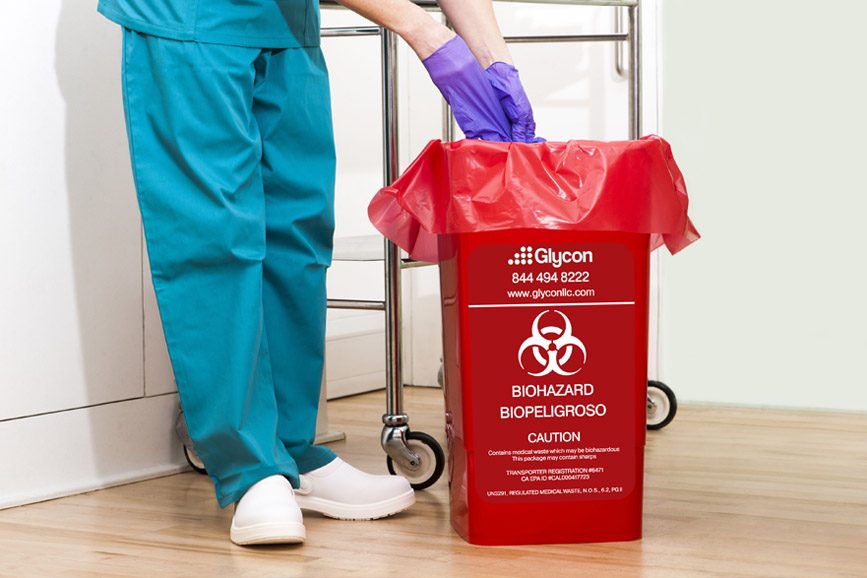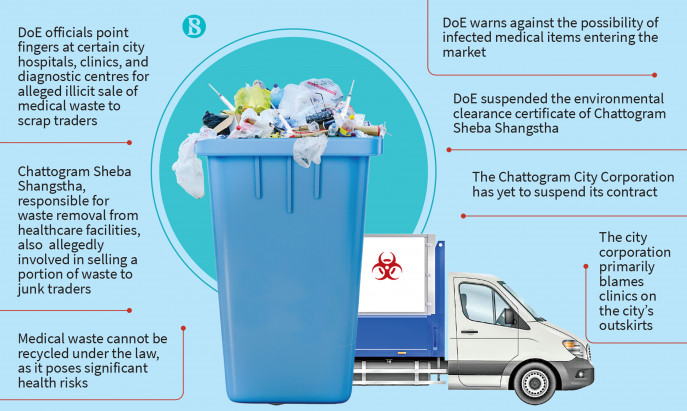The Value of Proper Medical Garbage Disposal: An Overview for Healthcare Facilities
Appropriate clinical waste disposal is a crucial aspect of medical care center management, making sure the safety and security and well-being of individuals, personnel, and the atmosphere. From comprehending the different classifications of medical waste to abiding with regulative requirements, healthcare centers must take on reliable waste segregation practices and choose proper disposal approaches.
Understanding Medical Waste Categories
Recognizing clinical waste groups is important for correct disposal in health care centers. Medical waste is a broad term that includes various kinds of waste generated in medical care settings, such as medical facilities, clinics, and labs. Categorizing clinical waste aids ensure that it is handled, stored, and disposed of securely and based on applicable policies.
There are several groups of medical waste that healthcare centers require to be aware of. These groups include infectious waste, sharps waste, pharmaceutical waste, chemical waste, and contaminated waste (medical waste disposal services with WasteX). Each category has details attributes and requires various disposal techniques to minimize the risk of injury to health care workers, people, and the environment
Infectious waste, as an example, refers to waste infected with potentially contagious materials, such as blood, body liquids, and tissues. Sharps waste consists of needles, syringes, and other sharp things that can trigger injury or transfer infections. Pharmaceutical waste includes run out or extra medicines, while chemical waste consists of unsafe chemicals used in clinical treatments. Radioactive waste consists of products contaminated with contaminated materials, such as nuclear medication products.
Conformity With Regulatory Needs
Medical care centers should ensure conformity with regulative demands for proper medical garbage disposal. Regulatory bodies, such as the Environmental Defense Firm (EPA) and the Occupational Safety and Health And Wellness Administration (OSHA), have actually developed policies and guidelines to safeguard public health and the setting. These laws detail the appropriate handling, storage, transportation, and disposal of clinical waste.
Compliance with governing demands is vital for health care facilities to prevent lawful fines, reputational damage, and possible injury to human wellness and the setting. Failing to adhere to these laws can result in penalties, lawsuits, and also the suspension or abrogation of operating licenses.
To make sure conformity, health care facilities must develop detailed waste administration programs that include personnel training, appropriate waste segregation, and the use of proper containers and tags. Routine audits and assessments ought to likewise be conducted to recognize any non-compliance problems and resolve them without delay.
It is essential for medical care centers to keep up to day with adjustments in laws and update their waste administration techniques as necessary. This can be attained by actively checking updates from regulatory bodies and taking part in training programs and workshops.
Carrying Out Efficient Waste Segregation Practices
To make certain appropriate clinical waste disposal, healthcare centers have to execute reliable waste segregation methods. Waste partition is a critical action in the overall waste administration procedure, as it helps minimize the risk of infection, avoids cross-contamination, and ensures the safe disposal of different kinds of waste. Reliable waste partition techniques involve dividing clinical waste right into different classifications based upon its features and potential dangers.
One common practice is the segregation of sharps waste, such as scalpels and needles, from other types of clinical waste. Sharps waste must be put in puncture-resistant containers to stop injuries and prospective infections. Additionally, contaminated materials, such as chemicals and pharmaceuticals, need to be divided from general clinical waste to stop ecological contamination.
Proper labeling and color-coding of waste containers are crucial for reliable waste partition. Clear and visible labels need to be put on each container to suggest the sort of waste it consists of and any kind of special handling needs - medical waste disposal services with WasteX. Furthermore, color-coding can be made use of to distinguish between different waste groups, making it much easier for healthcare personnel to identify and get rid of of waste appropriately
Normal training and education and learning for health care staff is important for the successful implementation of waste partition methods. Team member ought to be informed on the different waste groups, proper partition techniques, and the value of adhering to waste administration methods. This will certainly aid make certain compliance and consistency in waste segregation methods throughout the center.
Deciding On Appropriate Disposal Techniques
Correct option of suitable disposal approaches is necessary in guaranteeing the ecologically responsible and risk-free monitoring of medical waste in health care facilities. Medical care facilities produce a variety of medical waste, including sharps, infectious waste, pharmaceutical waste, and chemical waste - medical waste removal services. Each kind of waste requires specific disposal approaches to minimize the danger of contamination, injury, and environmental injury
One usual disposal technique for clinical waste is incineration. Incineration involves the regulated burning of waste at high temperature levels. This method is effective in destroying virus and decreasing the quantity of waste. It can release unsafe toxins into the air if not effectively controlled.

Chemical sanitation is another technique utilized for particular sorts of clinical waste, such as pharmaceutical waste. This approach uses chemicals to neutralize or ruin pollutants. It is essential to choose chemicals that are risk-free and ecologically pleasant.
In some cases, land fill disposal might be suitable for non-hazardous medical waste (medical waste disposal services with WasteX). However, appropriate segregation and product packaging are crucial to stop leakage or contamination.
Eventually, health care facilities should very carefully evaluate the characteristics special info of their clinical waste and select proper disposal techniques that focus on security, environmental management, and regulative compliance. Normal training and tracking are essential to guarantee that medical care personnel adheres to appropriate disposal methods.

Training and Educating Personnel on Proper Disposal Procedures
Team education and training play a crucial duty in making certain the correct disposal of medical waste in health care centers. It is crucial that all team members, including doctors, registered nurses, service technicians, and support staff, get extensive training on proper disposal procedures. This training should cover the different types of medical waste, their prospective threats, and the ideal methods for dealing with, segregating, and throwing away them.
Among the key objectives of staff education and training is to make sure that all medical care specialists comprehend the significance of correct disposal treatments and the potential consequences of inappropriate waste administration. They need to be knowledgeable about the dangers connected with clinical waste, such as the transmission of infections and the contamination of the atmosphere. medical waste removal services. By recognizing these threats, personnel participants will be much more determined to follow correct disposal protocols and take the required precautions to secure themselves, their associates, and the area
Educating should additionally cover the use of individual safety equipment (PPE) and the correct methods for handling clinical waste. Staff members ought to be informed on just how to recognize and set apart various sorts of waste, such as sharps, contagious waste, and dangerous chemicals. They must also be trained on the proper use waste containers, such as sharps containers and biohazard bags, as well as the relevance of labeling and securing these containers properly.
Moreover, team education and learning and training ought to consist of normal updates and refresher programs to ensure that medical care professionals remain notified concerning the most recent regulations and best practices in clinical waste disposal. This ongoing education and learning is important to maintain a high degree of recognition and conformity among personnel members.
Conclusion
To conclude, proper clinical garbage disposal is of utmost significance for medical care facilities. Recognizing the different categories of medical waste and complying with regulatory demands guarantees the safety and well-being of both health care workers and the basic public. Implementing try this website efficient waste partition practices and choosing suitable disposal techniques are vital in avoiding the spread of transmittable diseases and securing the setting. Lastly, training and enlightening team on correct read more disposal treatments is important for preserving a tidy and safe health care center.
From recognizing the various groups of medical waste to conforming with regulative needs, healthcare centers must embrace efficient waste segregation methods and pick suitable disposal methods. These classifications consist of transmittable waste, sharps waste, pharmaceutical waste, chemical waste, and contaminated waste.To make sure correct medical waste disposal, health care facilities need to execute effective waste segregation techniques. Waste segregation is a crucial step in the overall waste administration process, as it helps minimize the threat of infection, avoids cross-contamination, and ensures the safe disposal of various types of waste. Medical care facilities create a range of clinical waste, including sharps, transmittable waste, pharmaceutical waste, and chemical waste.